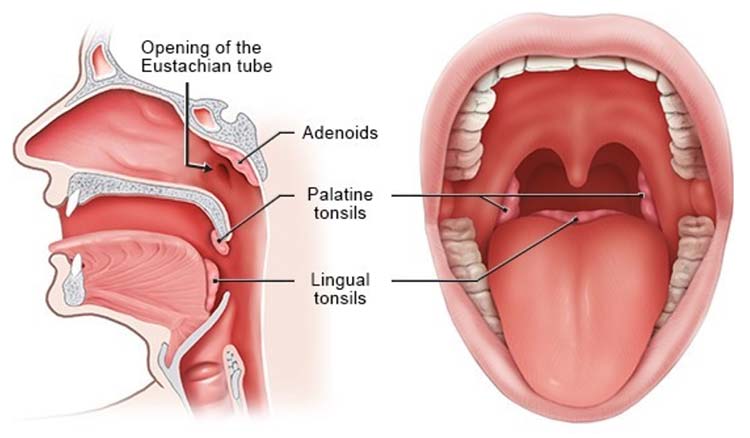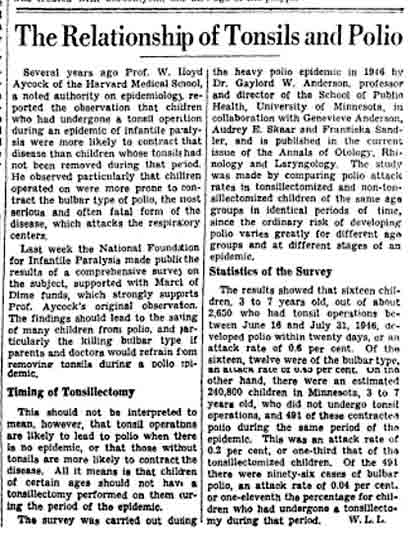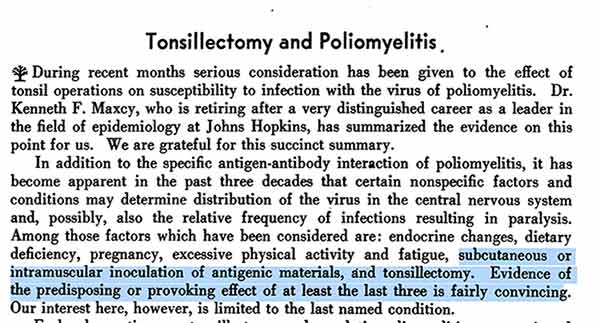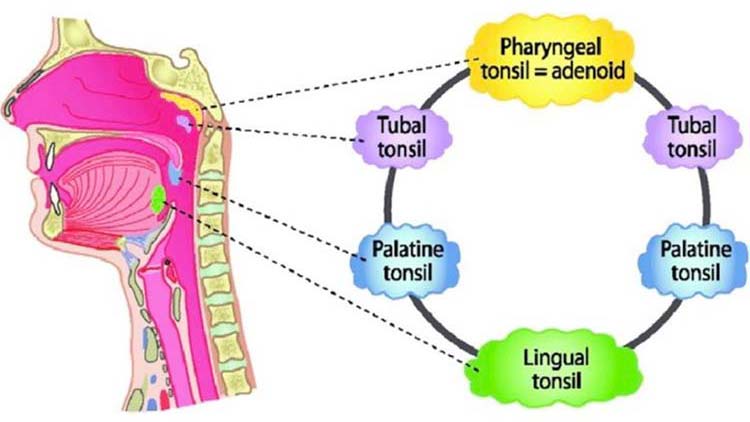Outsmarting Nature, a Futile Affair
Our bodies are nothing short of a miracle. The way our different parts talk to each other and work together to maintain the homeostasis is a mystery that is so complex that no matter how much we learn, there is always more to the puzzle. The complexity, however, doesn’t stop human arrogance from getting in the way, with some help from greed.
“Modern medicine is much like a very clumsy elephant in a china shop, There is never a lack of self-confidence and exclamation points in the medical marketing brochure. (Case in point: lobotomy used to be touted as a miracle “surgery for the soul.”) And yes, in acute situations, modern medicine is a godsend.
But when it comes to understanding of the interconnectedness of different body parts and various mysterious things that nature knows and we don’t, the scientists are babies. And often, they are very confident babies with a strong drive for career growth and a very impressive marketing brochure.
The philosophical problem is that our civilization runs on intellectual arrogance and abstract thought. Arrogance alone is sufficient to lead the people astray. But of course, arrogance is not alone in that shop where the elephant is dancing like a klutz. Arrogance is accompanied by corruption, greed, indifference to other people’s suffering, and love of power.”
The story of tonsillectomy demonstrates how blind and enthusiastic “faith in science” gets ahead of humility and common sense. Once the most popular surgical intervention performed on children, tonsillectomy has been eventually proven to do more harm than good.
What Are the Tonsils?
Today’s widely accepted view is that the tonsils are a part of our immune system, providing the first line of defense against the pathogens entering the body though nose and mouth.1,2 There are different types of tonsils:
- Palatine tonsils
- The adenoids (pharyngeal tonsil)
- Tubal tonsils
- Lingual tonsil
The two palatine tonsils are located on the right and left of the back of the throat. The adenoids are high up in the throat, behind the nose. The lingual tonsil is located far back at the base of the tongue, on its back surface. The tubal tonsils are located behind the opening of the Eustachian tube (the tube that links the nasopharynx to the middle ear), on the lateral wall of the nasopharynx.
Together, they form Waldeyer’s ring, a ring around the opening to the throat. The location of the tonsils allows them to prevent germs from entering the body through the mouth or the nose. There are also more immune system cells located behind Waldeyer’s ring on the sides of the throat. These cells are said to be able take on the function of the adenoids if they have been removed.

What Do the Tonsils Do?
Today, the prevalent view is that the tonsils assist in trapping and “disarming” the pathogens entering one’s mouth and nose. They contain immune cells that produce antibodies used to kill pathogens before they can spread to the rest of the body. They are known to contain a lot of white blood cells.
Additionally, the adenoids are known to be “covered by mucus and hairlike structures called cilia. The cilia work to push nasal mucus down one’s throat and into one’s stomach.”
This 2006 paper on mucosal immunity offers additional insights: “the tubal tonsils possess abilities of active transportation of foreign antigens, and will act as inductive and effector sites in the mucosal immune system. Our results also indicated a significant difference in roles of immune responses among individual tonsillar organs, suggesting functional sub-compartmentalization.”
The mention of “functional sub-compartmentalization” suggests that the indiscriminate removal of the palatine tonsils and the adenoids, done on a massive scale for decades, was not such a great idea after all! But wait, maybe it really was a great idea if we measure its greatness not by how much our health has improved but based on how useful it has been to the pharmaceutical bottom line?
After all, the more thoroughly the people’s natural defenses are nuked, the more likely they are to buy into the “fixes” that the pharmaceutical industry wants to sell — be it various expensive procedures or life-saving vaccines. And that’s how the medical cookie has been crumbling for a very long time now. Yay, yay, lucky us!
A Historical Perspective
According to this historical overview, based on literature mentions, the surgical removal of the tonsils has been practiced for at least three thousand years.
“The Roman doctor Cornelius Celsus, in the first century before Christ, was the first one to describe a tonsillectomy doing the surgical procedure with his own finger for dissection and removal of the structures. Versalius in 1543 was the first one to describe the tonsils with details, including its sanguine irrigation.
Duverney, in 1761, made the first accurate description of the pharyngeal region, but detailed anatomical and histologic studies only had been realized in the 19th century by Wilhelm Von Waldeyer. Physick in 1828 introduced instruments for the fast accomplishment of the tonsillectomy.
In Brazil, the first surgery was realized in the decade of 1920 by a surgeon in the Santa Casa of Sao Paulo, Schmidt Sarmento. Currently the tonsillectomy is the most realized surgical procedure in children in the world.”
In the 1600s, European doctors reportedly believed3 that “the secretions of the nose were formed in the brain and entered the nasal cavity through the cribriform plate of the ethmoid. The function of the tonsils was thought to be to absorb the secretions and send them back. If large amounts of tonsillar tissue were removed the secretions then gathered in the larynx, causing hoarseness.”
(As a side note, today the medical opinion is that cerebrospinal fluid can enter the nasal cavity as a result of trauma or spontaneous — the medical term for “we have no idea why it happened” — rupture of dura mater, the membrane that surrounds and protects the brain. That condition is known as nasal CFS leak.4)
Back to the tonsils. According to the Ulster Medical Journal, “the first sign of a permanent change from partial to complete removal of the tonsils came in 1897. Ballenger in the U.S.A. realised that partial removal failed to alleviate symptoms completely in a large majority of cases. He began to remove the tonsil with its capsule, using a scalpel and forceps.”
“Some ten years later, dissection tonsillectomy was pioneered in this country by George Waugh of Children’s Hospital, Great Ormond Street. In 1909 he published, in the Lancet, his account of nine hundred cases of dissecting out the tonsils complete with capsule, using fine dissecting forceps and curved scissors.
The operation was performed with the patient lying on his back with the head extended. The tongue was held out of the way with a stitch, and the mouth held open with a gag between the last molar teeth.”
Until mid-20th century, the tonsils were considered “useless” organs, and their role in mounting defenses against pathogens was largely unknown. Tonsillectomy, on the other hand, was considered a useful and safe procedure, and it was performed routinely all over the world, especially on kids.
The know-it-all doctors loyally “followed the science” (because why not), the parents naively believed the doctors, and many millions of kids had tonsillectomy performed on them. It was considered so innocuous and beneficial that the doctors would dismiss the rare patients’ (or parents’) concerns about the long-term consequences of the procedure as unscientific worry or old wives tales.
Anecdotally, as someone who grew up in a medical family in Moscow, I heard that in the 1950s and 1960s in Russia, the official view was that people were generally better off without the tonsils, and tonsil surgeries were often performed just in case. Tonsils were considered more or less a useless organ, and their role in human immune response was not discussed in medical school at all.
According to the journal called Medical History, even at the start of the twentieth century, “tonsillectomy was routine – performed on at least 80 000 schoolchildren each year in Britain.” It wasn’t until the 1960s that researchers began to understand the important role the tonsils played in immunity.5 None the less, NHS carried out approximately 37 000 childhood tonsillectomies from April 2016 to March 2017.6
According to this 2007 paper, “between 1915 and the 1960s, T&A was the most frequently performed surgical procedure in the United States. The driving force was the focal theory of infection, which assumed that circumscribed and confined infections could lead to systemic disease in any part of the body.
The tonsils in particular were singled out as ‘portals of infection,’ and therefore their removal became a legitimate therapy … Tonsillectomy persisted despite ambiguous supportive evidence.
Although criticisms of the procedure were common by the 1930s, its decline did not begin until well after 1945 and involved debates over the nature of evidence, the significance of clinical experience in the validation of a particular therapy, and the role of competing medical specialties.”
It is estimated that in the United States 1,400,000 tonsil surgeries were performed in 1959, around 500,000 in 1979 and 250,000 ones per year in the decade preceding 2006 (although the numbers vary, and, according to another source, in 2006, half a million of them were done in America alone).
An Interlude: Removing the Guards From the Town Gate
I’d like to introduce a helpful metaphor. It is an oversimplified metaphor but it illustrates the case well.
Let’s imagine a town that is surrounded by a wall. At the gate, there are guards who are put there to protect the citizens of the town. Let’s say, the town is often attacked by various scoundrels, and the guards do what they are supposed to do — they fight.
They usually fight successfully but after their battles, they look all bruised and beat up. And so the ruler of the town makes his rounds one day, looks at them, and says, “Our guards look ridiculous, remove them from the gate!” And so the guards are sent home, and next time the scoundrels attack, they freely enter the town. The end.
Impact of Tonsillectomy on Broad Immunity
Mid-20th century, the arguments against the removal of tonsils started noticeably mounting. For example, the doctors started noticing an association between tonsillectomy and developing paralytic polio. (I wrote about the connection between polio and DDT here).
According to this 1994 review of tonsil immunology, tonsillectomy leads to reduced resistance to polioviruses.
“Children who were previously immunized orally with live poliovirus vaccine [that’s another beast] dropped their titres three-fold to four-fold after tonsillectomy and adenoidectomy. Attempts to vaccinate seronegative children who had been subjected to tonsillectomy and adenoidectomy resulted in delayed and lowered nasopharyngeal secretory immune responses as measured by IgA antibodies to poliovirus.”
According to another study from 2002, “palatine tonsils have a potential influence on the growth and control of the physiological mouth bacteria.”
A recent study found that the children who underwent tonsillectomy and then observed for 4-6 years demonstrated lowered antibody production (IgM, IgA, and IgG). They also observed that “CD10 as a marker of B lymphocytes in children undergoing tonsillectomy was significantly less than those healthy children.
This may indicate a decrease in B cells and further reduced antibody production in these patients.” And then there is “Tonsillectomy Confidential,” a Boing Boing (remember them?) article from 2012:
“A 2011 review of nine articles found that a large population of … children undergoing [adeno-tonsillectomy — removal of both adenoids and tonsils] gained a greater than expected amount of weight postoperatively.” Another study concluded “risk of overweight should be mentioned as a probable undesirable outcome of adenotonsillectomy.” A third study points in the same direction …
“Another recent association is with heart attacks. A 2011 study found that people who had had tonsillectomies before age 20 had a much higher rate of heart attacks (about 50% higher) than matched controls over the next twenty years. The study cites other evidence that immune dysfunction increases heart attacks. The same study found that hernia operations at a young age were not associated with heart attacks.
A 2010 study based on different people found that “tonsillectomy before age 7 years was associated with a 1.5-fold increase in mortality” from age 18 to 44. This supports the association of tonsillectomies with a large percentage increase in a common cause of death (heart attacks).
That tonsillectomies increase heart attacks is made more plausible by the well-established association of gum disease and heart disease. Gum disease is caused by bacteria in the mouth; tonsils protect against bacteria in the mouth.”
Polio Provocation
In 1942, Time Magazine printed a story that they could not have published today. The story was titled, “Medicine: Tonsils and Polio”:
“Five of the six children of an Akron family had their tonsils out one day last summer and within 48 hours all five came down with infantile paralysis. Three of them died. The sixth child did not contract paralysis. There had been no epidemic of the disease in Akron and none followed.
A group of researchers from the University of Michigan, Western Reserve University and Akron’s Children’s Hospital investigated this puzzling case, published their findings last fortnight in the A.M.A. Journal.
The investigators discovered that the infantile paralysis (poliomyelitis) virus was present in the feces of the sixth child. They also found the virus in two groups of cousins with whom the children had come in contact, and in one family of neighborhood playmates — ten children in all. Yet none of these children, though harboring the polio virus, got the disease.
The researchers conclude that in the case of the five paralyzed children the tonsil operation was “the precipitating factor,” warn doctors and parents that tonsil operations are dangerous during the poliomyelitis season (summer and fall), even though the disease “is not notably prevalent in a community.”
Probable connection between tonsillectomies and poliomyelitis: nerves injured by surgery are more susceptible to polio infection, so that the latent virus could travel readily from the injured throat nerves to the medulla oblongata, where the spinal cord enters the brain.”
Here is another one, from Cambridge University (2013), addressing the association between paralysis and both tonsillectomy and different childhood vaccines:
“In 1980, public health researchers working in West Africa detected a startling trend among children diagnosed with paralytic polio. Some of the children had become paralyzed in a limb that had recently been the site of an inoculation against a common paediatric illness, such as diphtheria and whooping cough.
Studies emerging from India seemed to corroborate a similar association between diagnosis of polio and recent immunisation [emphasis mine].
These reports reignited a debate known as the theory of polio provocation that has waxed and waned since the early 1900s – and, at times, shaped immunisation policy. The theory of polio provocation argued that paralytic polio can be provoked by medical interventions, such as injections or tonsillectomy.
The controversy that surrounded the debate forced medical professionals into the uncomfortable position of considering whether programmes and practices intended to prevent some illnesses might be also causing another. And here is the Lancet (2014):
One of the first medical procedures implicated in the causation of polio was tonsil surgery. A study of more than 2000 case histories in the 1940s by the Harvard Infantile Paralysis Commission concluded that tonsillectomies led to a significant risk of respiratory paralysis due to bulbar polio [emphasis mine].
Although proponents of the theory did not entirely oppose tonsillectomies, they cautioned that such interventions should be avoided during epidemics. Reflecting the growing body of evidence that tonsillectomies could provoke polio, many doctors in the USA adjusted their surgical procedures to account for disease-endemic factors.
“The policy of the United States Army”, Major-General E A Noyes acknowledged in 1948, “has been to stop tonsil and adenoid operations during epidemics”. Even though laboratory technology at the time was not sufficiently advanced to unravel the mechanism, published evidence affected clinical practice.
Concerns about tonsillectomies coincided with indications that paediatric injections could also incite polio paralysis. Evidence of this correlation was first published by German doctors, who noted that children who had received treatment for congenital syphilis later became paralysed in the injected limb.
Although further studies from Italy and France corroborated this link, it was not until the end of World War II that injection-induced polio emerged as a public health concern. The application of epidemiological surveillance and statistical methods enabled researchers to trace the steady rise in polio incidence along with the expansion of immunisation programmes for diphtheria, pertussis, and tetanus [emphasis mine].
A report that emerged from Guy’s and Evelina Hospitals, London, in 1950, found that 17 cases of polio paralysis developed in the limb injected with pertussis or tetanus inoculations. Results published by Australian doctor Bertram McCloskey also showed a strong association between injections and polio paralysis. Meanwhile, in the USA, public health researchers in New York and Pennsylvania reached similar conclusions.”
Here is a visual quote from the New York Times (1950). Oh how have the times changed! Today, an article submission like this would be condemned as “dangerous misinformation” and never see the light of day! Quote:

And finally, here is the American Journal of Public Health (1954, PDF).

Tonsillectomy and Autoimmune Disease
Tonsillectomy may also be a factor in autoimmune disease. Here is what a study published in 2016 said:
“The incidence of a group of autoimmune diseases was higher in individuals operated with a tonsillectomy. Immune dysfunction due to tonsillectomy may partly explain the observed association. However, the underlying mechanisms need to be explored in future studies.”
And while some researchers study the possible association between the removal of the tonsils and autoimmune disease, other ones are busy figuring out how to better convince the people to not “do their own research.” Case in point:
“The widespread misconception that tonsillectomy leads to a decrease in immunity [!!!] may lead to fear and avoidance of the operation. This can result in a deterioration of the situation, such as sleep-related breathing issues, frequent infections, and an increase in complications … Almost 36% of study subjects thought that tonsillectomy affects immunity.
Only 18% of study subjects thought that there is a relationship between tonsillectomy and autoimmune diseases. About one-third of the respondents had received this information from community members and social media. A small number of study subjects relied on public awareness programs.
Therefore, social media can play a vital role in the community to remove misconceptions regarding tonsillectomy and its effect on immunity and autoimmune disease. Further educational interventional studies are required to see the correction to the public perception of tonsillectomy and its effect on immunity and autoimmune diseases [emphasis mine].”
“Just Say No”
By association, here is a 2011 Newsweek article. It has been taken down but from the looks of it, it was first republished by The Daily Beast, then taken down. Check this out:
“New research shows how some common tests and procedures aren’t just expensive, but can do more harm than good … From PSA tests for prostate cancer (which more than 20 million U.S. men undergo every year) to surgery for chronic back pain to simple antibiotics for sinus infection, a remarkable number and variety of tests and treatments are now proving either harmful or only as helpful as a placebo.”
Aaaaaah! Misinformation in the mainstream media!!! Mr. Factchecker, please help!!!! I would like to end this story with a visual quote from that same very reasonable Newsweek article, with which I wholeheartedly agree. Sometimes, the best option it to just say no.

About the Author
To find more of Tessa Lena’s work, be sure to check out her bio, Tessa Fights Robots.

